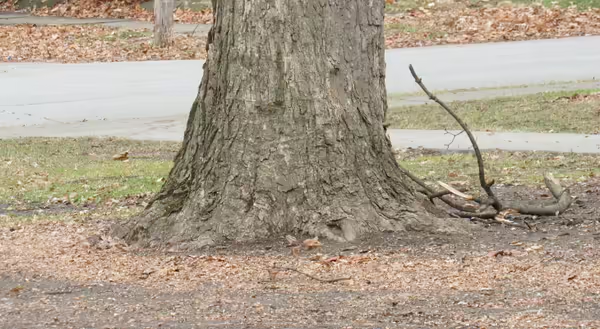
Many urban trees only live about 20% of their life due to issues like pests and disease, but mostly can be linked back to improper care and installation. A tree should live more than 50 years, and up to 100 years depending on their species. A recent USDA study analyzing tree life expectancy in urban areas finds the typical street tree living between 19-28 years; however, the ideal life span of a white oak is 600 years, and the average life span of a red maple can be between 75 to 150 years in the Illinois wilds.
Urban greening through planting trees has increased in response to residents’ lack of interaction with nature and the benefits these trees provide the environment through services like cooling buildings with their shade, and cleaning the air and water through filtration.
However, urban trees must withstand pollution, poor soils, limited leg room for roots, and pressure from insects and disease, and their health and cultural requirements are not considered or monitored.
Maybe it’s these urban challenges that cause them to die young; what’s worse, most are planted incorrectly, giving them a poor outlook from the beginning.
However, some basic knowledge of tree planting can help your urban tree live longer.
1) Right tree, right placement.
It is essential that certain growing parameters be considered when choosing what kind of tree to plant. Answer the following questions to choose the right tree.
What are the attractive characteristics? Is the tree deciduous or evergreen? What are the cultural requirements of the tree (sunshine, soil, water and climate)? What is the soil pH and the soil type (well drained or compact)? Does the site get full sun or partial sun? How much water does that tree need? What is the growth rate of the tree? What kinds of things does the tree tolerate (salt, drought, flooding)? What are the insect and disease issues that tree is susceptible to? What are the planting needs and pruning needs of the tree? Can the tree thrive in areas that restrict root growth?
2) Space your trees properly for their mature size.
Small trees that grow 10 to 30 feet tall need a twenty-foot diameter. Medium sized trees that grow 30 to 50 feet tall need a thirty-foot diameter. Large tees that grow taller than fifty feet need a forty-foot diameter. Many homeowners make this mistake by planting a small sapling close to their house only to cut it down later, or over-prune, interfering with the natural shape of the tree.
3) Plant trees at the right depth.
Trees planted too deep look like telephone poles because their natural root flare can not be seen above the soil line. This strangles the roots below the soil. A proper planting hole is two to three times wider than the root ball and no deeper. (Rough up the sides of the hole with your shovel so roots will spread easier.) Place the tree so the root flare is at or just above the soil line. Sometimes, the tree is planted too deep in the container or root ball it comes in. It is essential that you dig a little to find the top root, and plant at that depth. Avoid amending soil, as roots won't expand into the less favorable soil.